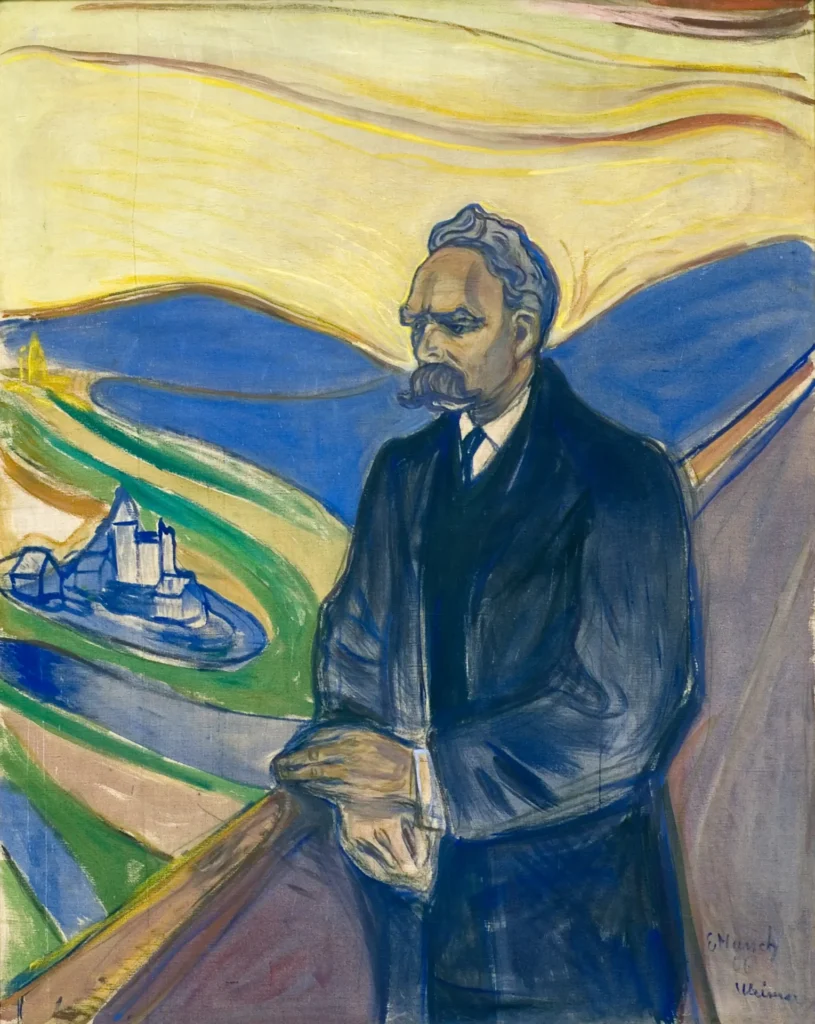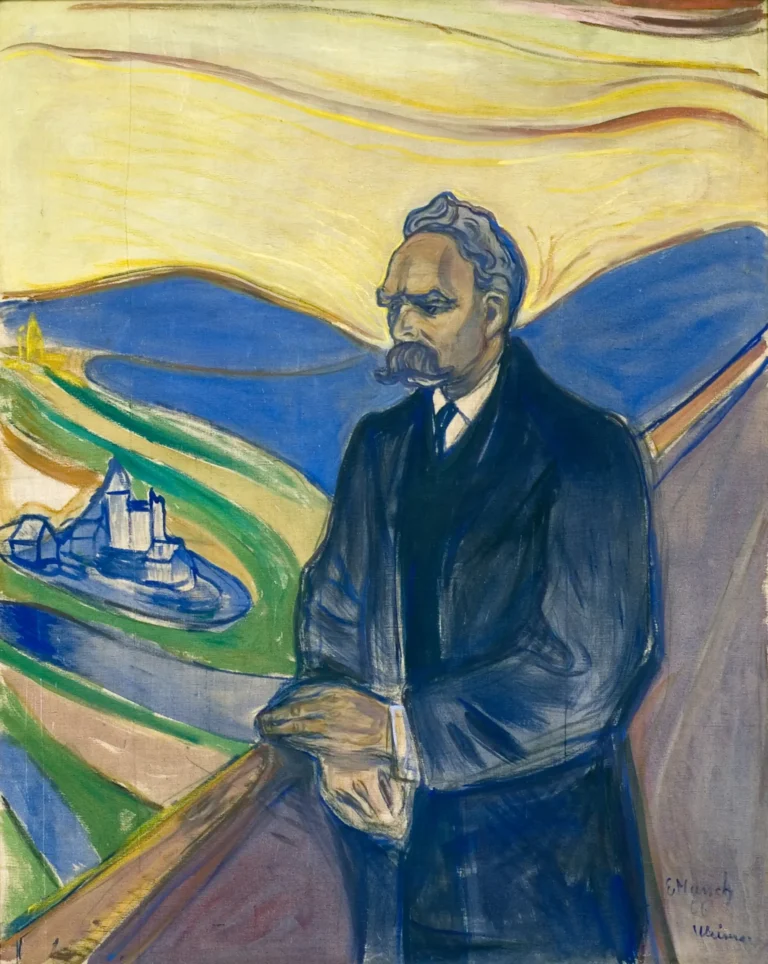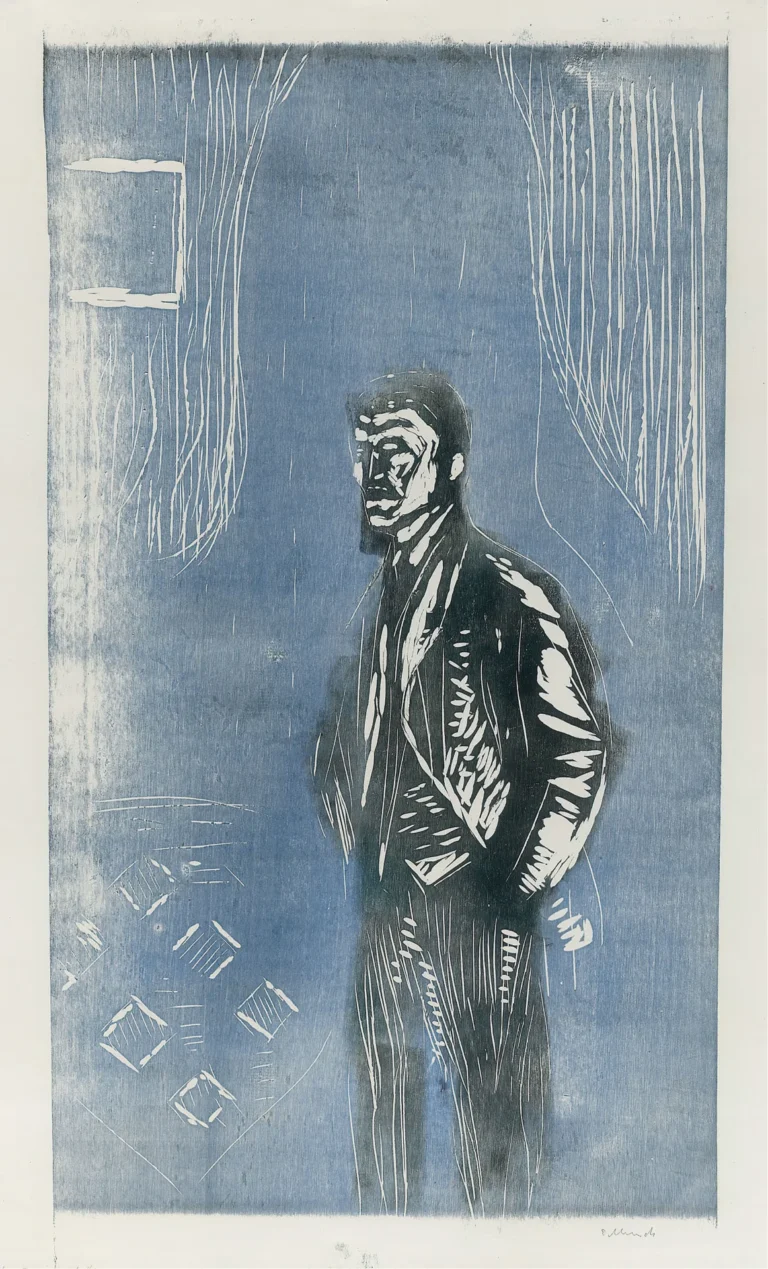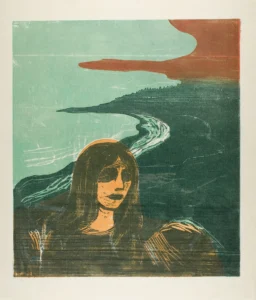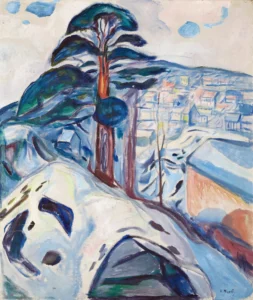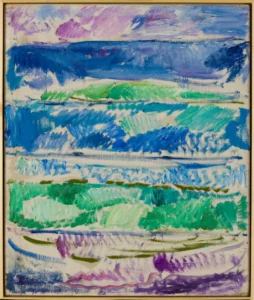Friedrich Nietzsche (1906)
Created in 1906 for Swedish entrepreneur Ernest Thiel, Edvard Munch's 'Portrait of Friedrich Nietzsche' is an expressive representation of the philosopher blending naturalism and Symbolism. Drawing from Nietzsche's photographs, Munch encapsulates his distinctive features while embedding the weight of philosophical contemplation in the composition. With a vibrant yet ambiguous landscape behind Nietzsche, the painting conveys the complex interplay of power and resignation inherent in his ideas, marking a profound artistic kinship between the two figures. The larger version of the portrait resides in the Thielska galleriet in Stockholm, captured in rich oil and tempera.
Year 1906
About the Artwork
Did You Know
Liked what you see? Add it to your collection.
Enjoyed reading? Share it.
... continued
Commission and Creation
The portrait was commissioned by Ernest Thiel, a Swedish entrepreneur and art collector, at the suggestion of Elisabeth Förster-Nietzsche, Friedrich Nietzsche's sister. Since Nietzsche had died in 1900, Munch had to rely on photographs of the philosopher to create the portrait.
Style and Technique
The painting is characterized by Munch's expressionist style, blending elements of naturalism and Symbolism. It features Nietzsche standing on a balcony or bridge, looking out at a landscape with a vivid sky. He is depicted wearing a waistcoat, tie, and long coat in shades of dark blue, and is leaning on a balustrade with his right arm. The portrait captures Nietzsche's physical essence, including his distinctive walrus mustache and bushy eyebrows.
Interpretation
Munch's portrayal of Nietzsche is not just a physical representation but also an 'ideas portrait.' It reflects Nietzsche's philosophical ideas and Munch's own interpretation of them. The painting conveys a sense of the philosopher being weighed down by his ideas, with a pose that suggests both power and resignation. The ambiguous setting, with a city or building in the background, adds to the complexity of the portrait, leaving it open to various interpretations regarding Nietzsche's contemplation of human endeavor or the natural beauty around him.
Versions
There are two versions of this portrait. The larger, two-meter-high version is housed at the Thielska galleriet in Stockholm, which was donated by Ernest Thiel. A narrower version, also painted in 1906, remains in Munch's possession and is displayed at the Munch Museum in Oslo.
Materials and Dimensions
The larger version, located at Thielska galleriet, is painted in oil and tempera on canvas, measuring 215 x 146.5 cm (image dimensions) and 220.2 x 150.6 x 10 cm (framed dimensions).
Significance
This portrait is a testament to the spiritual and artistic kinship between Munch and Nietzsche. Munch was deeply influenced by Nietzsche's ideas, particularly the concept of the eternal return, which resonated with Munch's own artistic themes and metaphysical beliefs. The painting stands as a unique amalgam of naturalism and Symbolism, reflecting the profound impact of Nietzsche's philosophy on Munch's artistic vision.




